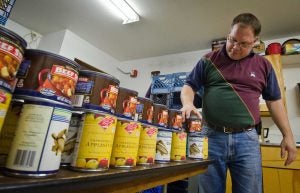The White House shocked the food world this past week when it proposed a drastic change to SNAP benefits. Nicknamed America’s Harvest Box, the plan would replace a portion of a recipient’s monthly food stamp benefits with a box of products grown and produced in the United States, including grains, cereals, beans, canned meat, shelf-stable milk, and canned fruits and vegetables. The proposal, which has the support of USDA Secretary Sonny Perdue, could potentially save the United States taxpayers more than $130 billion over the next 10 years. The change would be part of the 2018 Farm Bill, which covers most farm and food policy for the country.
Not surprisingly, the idea immediately caught heat from a variety of sources. Some criticized the administration for wanting to remove food autonomy from low-income families. Others claimed it would return food stamp recipients to a Soviet Union-type regime. More fairly, some critics wondered whether the boxes would really amount in savings, or how such a system could practically be implemented. Of course, the question arises as to what happens to all of the retailers that currently accept food stamps and derive a substantial portion of their income from those sales, including some farmer markets.

Although America’s Harvest Boxes seem a little far-fetched, the concept deserves some consideration. The United States is currently over $20 trillion in debt. We do a pretty good job of ignoring that, but at some point it will catch up with us. If we can find ways to improve these programs to maximize the quality of services while cutting down on costs, we should. Trust me, none of our government programs are so perfect that there isn’t room for improvement, or things that we can do better.
Honestly, can we consider that maybe America’s Harvest Boxes could actually solve some real problems?
What if it could help families that do not have easy access to quality grocery stores? Many low-income families do not have their own transportation, or the food selection at the corner convenience store may be lacking. As long as we made sure that the products in those boxes were good quality (no, not “government cheese”), then this could be a real convenience for families. By providing these families with quality products directly, they don’t have to worry about catching a ride, or visiting a special grocery store.
What if it could help families that do not have easy access to fruits and vegetables? Many urban areas, especially inner-cities, lack access to fresh, quality produce. This is a legitimate problem that prevents families from getting the high quality, nutritious food they need. While the current proposal does not include fresh fruits and vegetables, it is possible that local farms could partner with the government to provide in-season produce. When things are not available, canned fruits and vegetables can be just as nutritious and could also be sourced directly from family farms.
What if we found a way to open up new markets for farmers by connecting them with SNAP recipients? If done correctly, Harvest Boxes could partner with farmers to provide quality produce directly to families that need it. Although there have been recent attempts to bring SNAP recipients and farmers together, this could go even further. In fact, it could open up new markets for farmers that otherwise may not have fruits and vegetables as a viable growing option due to market constraints.
I get it — no one wants to eat “government cheese.” Low-income families should have access to healthy food choices just like everyone else. Certainly, I am not advocating anything to the contrary. But given the challenges already present in food distribution, there is potential here. Imagine if we could figure out a way to allow families to voluntarily choose this option as a portion of their SNAP benefits, and select the fresh produce that would be best for their families.
No doubt there is a lot to figure out and consider about these boxes before it could be successfully implemented. Critics of the plan do have legitimate points and concerns, especially that the current form does not allow for fresh products. But that does not mean we need to dismiss it completely without having a serious discussion about it first, and make changes to it that could result in a really brilliant reform.
Amanda Zaluckyj blogs under the name The Farmer’s Daughter USA. Her goal is to promote farmers and tackle the misinformation swirling around the U.S. food industry.



